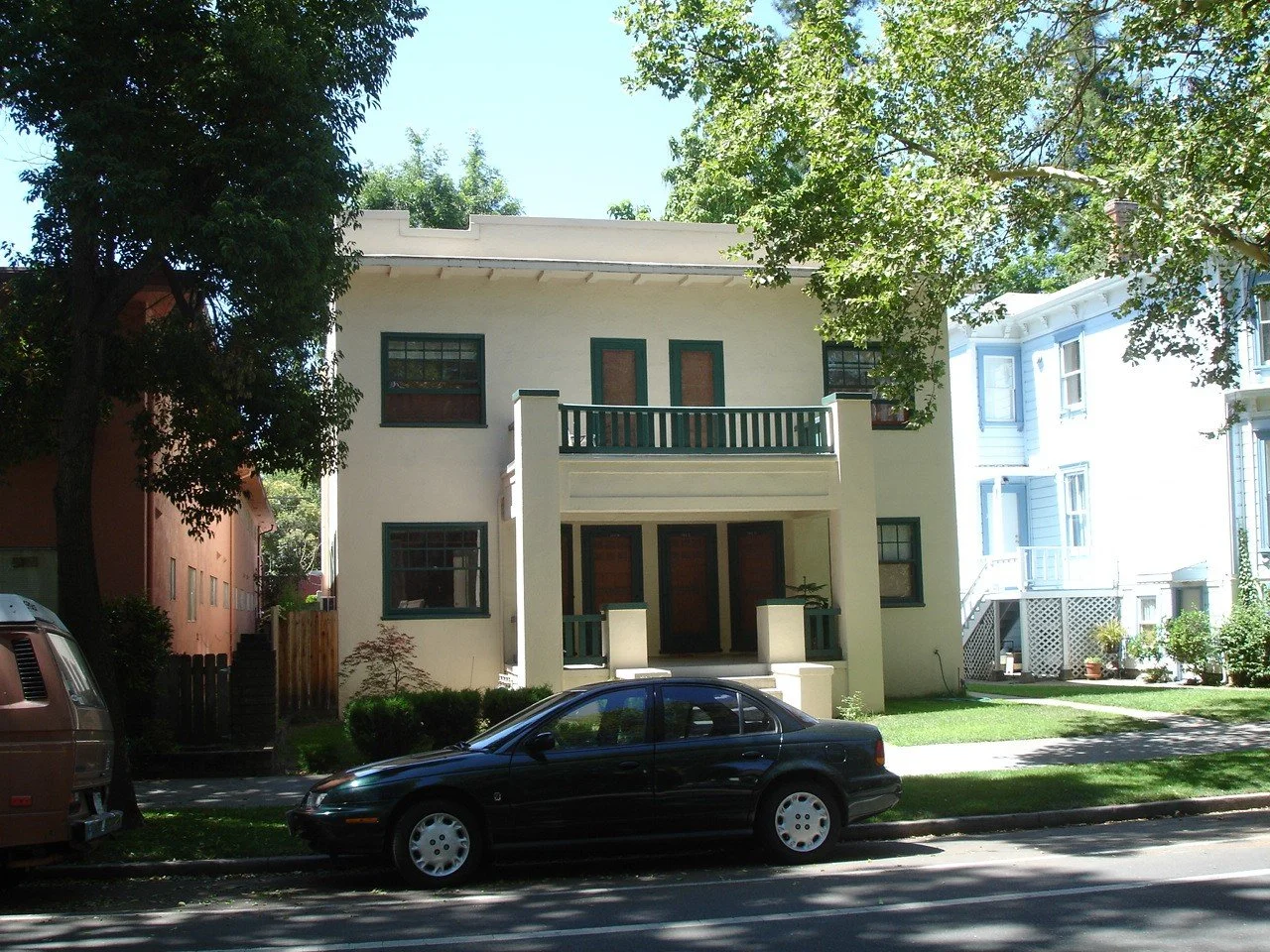New general plan puts Sacramento at the national forefront for housing friendly policies
An existing fourplex in Sacramento
Sacramento (Feb. 27, 2024) The Sacramento City Council Tuesday adopted a 2040 general plan that includes nation-leading policies to encourage housing construction near transit and in existing neighborhoods and reduce dependence on cars.
The new general plan takes effect on March 28 and will govern land uses in the city for the next two decades. Key changes include allowing property owners to build on a greater portion of their lot (known as floor area ratio, or FAR) if they construct neighborhood scale, multi-unit buildings such as triplexes and fourplexes in areas previously designated for single-family homes. Existing height limits will remain to preserve the scale of single-family neighborhoods even as their population increases.
With the adoption of the new general plan and subsequent zoning regulations, Sacramento will become the first jurisdiction in the nation to eliminate caps on the number of units that can be built in a single-family zone — as long as the buildings do not exceed the allowed floor area ratio and objective standards such as setbacks and height limits of 35 feet, said Matt Hertel, the City’s Long Range Planning Manager. Cities such as Portland and Minneapolis have also adopted new rules to encourage the construction of “missing middle” housing types like duplexes, triplexes, and fourplexes.
Sacramento’s new general plan also limits the size of new single-family homes, but the amount of allowed building area will increase for each additional unit proposed on a lot — a policy designed to encourage the construction of smaller and more attainable housing types. Remodels and additions are exempt from this policy.
“This plan represents the true progressive values of this city - housing for everyone,” said Mayor Darrell Steinberg.
More than 4,000 people provided input on the plan during an extensive outreach process. Staff reviewed all the input on the plan and made revisions in response, resulting in broad community support. The accompanying Climate Action & Adaptation Plan was also adopted Tuesday, putting the City of Sacramento on track to achieve carbon neutrality by 2045.
“We’re super excited about this monumental milestone,” Hertel said. “Centered on equity and sustainability, this is one of the premier comprehensive plans in the country, and it’s a testament to the extensive engagement by the community over the last five years.”
Speakers at the City Council meeting Tuesday overwhelmingly praised the changes. “This is truly a general plan that was written by city staff but deeply informed by the community,” said Isaac Gonzalez, president of the Tahoe Park Neighborhood Association. “This is Sacramento’s plan.”
Additional policies to encourage infill and reduce dependence on cars include prioritizing city investments in infrastructure that serves pedestrians, bicyclists and public transit over cars. The plan eliminates the requirement that developers provide parking, thereby reducing the cost of new housing developments.
New gas stations in the city will be prohibited unless they include a fast charging station for electric vehicles for each new gas fuel nozzle. New drive-throughs within a half mile of light rail stations are also prohibited.
In addition to the land use changes, the plan commits the City to adopting policies to encourage the development or temporary activation of vacant buildings and property.






